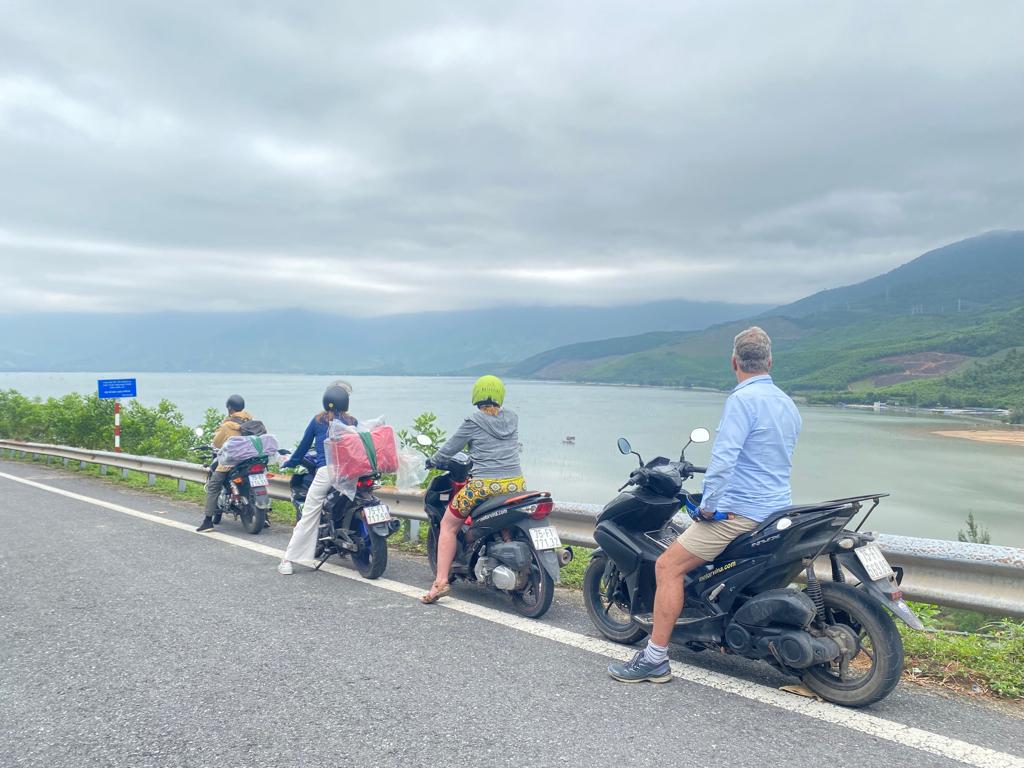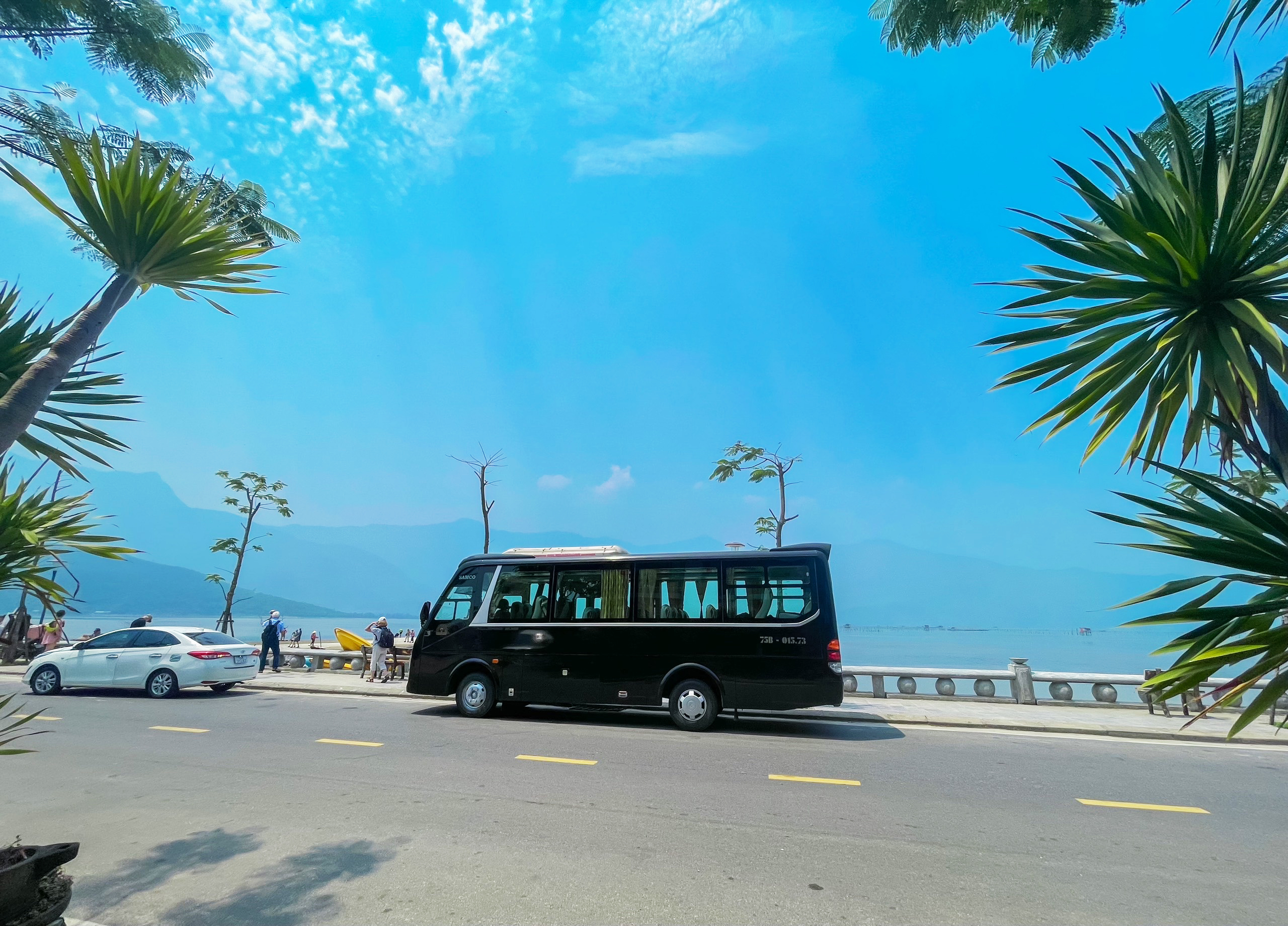4 Best Ways on How to Get from Hoi An to Hue
Planning your journey from the ancient town of Hoi An to the imperial city of Hue? You’re in for a scenic adventure through Central Vietnam’s most captivating landscapes. As someone who’s made this trip countless times, I’ll share the most reliable transportation options that suit different budgets and travel styles.
The 123-kilometer journey between these two UNESCO World Heritage Sites typically takes
3-4 hours, depending on your chosen method. Whether you’re a budget backpacker or seeking luxury comfort, understanding your options will help you make the best decision for your Vietnam adventure.
Why Travel from Hoi An to Hue?
Before diving into transportation methods, let’s address why this route is so popular among travelers. Hue, Vietnam’s former imperial capital, offers a completely different experience from Hoi An’s charming old quarter. You’ll discover:
- The magnificent Imperial Citadel with its forbidden purple city
- Royal tombs scattered along the Perfume River
- Authentic Vietnamese cuisine, including the famous Bun Bo Hue
- A more relaxed atmosphere compared to touristy Hoi An
1. Motorbike: The Adventurous Choice
For thrill-seekers and experienced riders, motorbiking from Hoi An to Hue offers an unforgettable experience. This option provides ultimate freedom to explore at your own pace.
Rental Options and Costs
Motorbike rentals in Hoi An cost approximately $5-10 USD per day, depending on the bike type:
- Automatic scooters (110-125cc): Perfect for beginners, $5-7/day
- Semi-automatic bikes (135-150cc): More power for mountain passes, $7-8/day
- Manual motorcycles (150cc+): For experienced riders only, $8-10/day
Essential Safety Tips
Having witnessed numerous accidents on this route, I cannot stress enough the importance of proper safety preparation:
- Always wear a quality helmet (required by law)
- Check brakes and tires before departure
- Carry rain gear – weather changes quickly in the mountains
- Start early to avoid afternoon storms
- Have your accommodation address written in Vietnamese
The Hai Van Pass Experience
The highlight of motorbiking this route is conquering the legendary Hai Van Pass. Featured in Top Gear’s Vietnam special, this 21-kilometer mountain road offers:
“Views so stunning that you’ll stop every few minutes for photos. The combination of misty mountains meeting the East Sea creates a photographer’s paradise.”
For detailed route guidance, check out Lonely Planet’s Hai Van Pass guide.

3. Tourist Bus: Budget-Friendly and Social
The tourist bus remains the most popular option among backpackers and budget-conscious travelers. These services operate multiple times daily, offering a balance between cost and comfort.
Types of Bus Services
| Bus Type | Price Range | Duration | Comfort Level |
|---|---|---|---|
| Standard Tourist Bus | $8-12 USD | 4-5 hours | Basic seats, AC |
| VIP Sleeper Bus | $12-18 USD | 4 hours | Reclining seats, WiFi |
| Limousine Bus | $20-25 USD | 3.5 hours | Premium seats, snacks |
Booking Your Bus Ticket
You have several booking options:
- Hotel reception: Most accommodations offer booking services
- Travel agencies: Found throughout Hoi An’s old town
- Online platforms: 12Go.Asia for advance bookings
- Bus company offices: For direct bookings without commission
What to Expect
Most tourist buses include:
- Hotel pickup in Hoi An (usually 30-45 minutes before departure)
- One rest stop for refreshments and restroom break
- Drop-off at your Hue hotel or central location
- Basic water bottle and sometimes snacks
- English-speaking staff or driver

Suggestions tour: Bus Hue to Hoi An via Hai Van Pass, Marble Mountains
3. Private Car or Taxi: The Most Comfortable Option
For travelers prioritizing comfort and flexibility, hiring a private car remains the top choice. This door-to-door service eliminates the hassle of navigating public transportation with luggage.
Advantages of Private Transportation
- Direct route with no unnecessary stops
- Air-conditioned comfort throughout the journey
- Flexibility to stop at attractions along the way
- Safe storage for luggage
- Professional drivers familiar with the route
Cost Breakdown
Private car services typically cost between $60-80 USD for the entire vehicle, accommodating up to 4 passengers. When split among travelers, this becomes quite economical at $15-20 per person. Many hotels in Hoi An can arrange reliable drivers, or you can book through reputable services like SAMTOUR VIETNAM’s private transfer service.
“The scenic route via Hai Van Pass adds only 30 minutes but rewards you with breathtaking coastal views that you’ll remember forever.”
Must-Stop Attractions En Route
One major advantage of private transportation is the ability to explore these remarkable sites:
- Marble Mountains (Ngu Hanh Son) – Sacred Buddhist pagodas within limestone caves
- Hai Van Pass – Vietnam’s most spectacular coastal road
- Lang Co Beach – A pristine stretch of white sand perfect for lunch
- Elephant Springs – Natural rock pools ideal for swimming

4.
4. Train Journey: The Scenic Alternative
Though not direct, taking the train from Da Nang to Hue offers a unique perspective of Central Vietnam’s coastline. This option requires first getting from Hoi An to Da Nang (30 minutes).
Getting to Da Nang Station
From Hoi An, reach Da Nang Railway Station via:
- Taxi/Grab: $10-15 USD, 30-40 minutes
- Local bus: $1-2 USD, 45-60 minutes
- Hotel shuttle: Some hotels offer station transfers
Train Schedule and Tickets
Several trains operate daily on this route:
| Train Number | Departure | Arrival | Seat Type | Price |
|---|---|---|---|---|
| SE2 | 13:03 | 15:35 | Soft Seat AC | $4-6 USD |
| SE4 | 09:17 | 11:54 | Hard Seat | $3-4 USD |
| SE8 | 17:42 | 20:24 | Soft Seat AC | $4-6 USD |
Book tickets at the station or through Vietnam Railways official website.
Why Choose the Train?
The train journey offers several unique advantages:
“Watching fishing villages and rice paddies roll by from your window seat provides an authentic glimpse into Vietnamese daily life that road travel simply can’t match.”
Comparing Your Options: Which is Best for You?
Let’s break down each option to help you make the best decision for your travel style:
Choose Private Car If:
- You’re traveling with family or a group
- Comfort is your top priority
- You want to explore stops along the way
- You have heavy luggage
Choose Motorbike If:
- You’re an experienced rider
- Adventure is your middle name
- You want complete freedom
- Weather conditions are favorable
Choose Tourist Bus If:
- You’re on a tight budget
- You enjoy meeting other travelers
- You prefer not to drive
- You’re traveling solo
Choose Train If:
- You appreciate scenic journeys
- You’re not in a rush
- You want a unique experience
- You enjoy train travel
Practical Tips for Your Journey
Regardless of your chosen method, these tips will enhance your travel experience:
Best Time to Travel
The route from Hoi An to Hue is most enjoyable during:
- February to May: Ideal weather with minimal rain
- Early morning departures: Cooler temperatures and better visibility
- Avoid October-December: Heavy rains can make travel challenging
What to Pack
Essential items for your journey:
- Motion sickness medication – The mountain passes can be winding
- Light jacket – Air conditioning can be strong
- Snacks and water – Not all services provide refreshments
- Camera – You’ll want to capture the stunning views
- Cash in small bills – For rest stop purchases
Booking in Advance
During peak season (June-August and December-January), advance booking is essential. Popular services fill up quickly, especially comfortable options like VIP buses and private cars.
Making the Most of Your Hue Visit
Once you arrive in Hue, don’t miss these experiences:
- Sunset boat cruise on the Perfume River
- Early morning visit to the Imperial City before crowds arrive
- Food tour exploring Hue’s unique cuisine
- Bicycle ride through countryside to royal tombs
For comprehensive Hue travel planning, visit our complete Hue destination guide.
Final Recommendations
After years of traveling this route and helping countless visitors, here’s my honest advice:
For first-time visitors, I recommend the private car option via Hai Van Pass. Yes, it costs more than the bus, but the ability to stop for photos and explore at your own pace makes it worthwhile. The memories you’ll create are priceless.
If you’re an experienced traveler on a budget, the tourist bus offers excellent value. Book a morning departure to arrive in Hue with time to explore.
For adventure seekers, motorbiking the Hai Van Pass is a bucket-list experience. Just ensure you’re confident handling a bike on mountain roads.
The train option works best for those who enjoy slow travel and want to experience local transportation.
“The journey from Hoi An to Hue isn’t just about getting from point A to B – it’s an integral part of your Central Vietnam adventure.”
Whether you choose comfort, adventure, budget, or scenic routes, this journey through Central Vietnam promises unforgettable experiences. Each transportation method offers its own unique perspective on this beautiful region.
Ready to explore more of Vietnam? Check out our guides on Da Nang attractions and Central Vietnam itineraries to plan your complete adventure.
Safe travels, and enjoy your journey from Hoi An to Hue!




